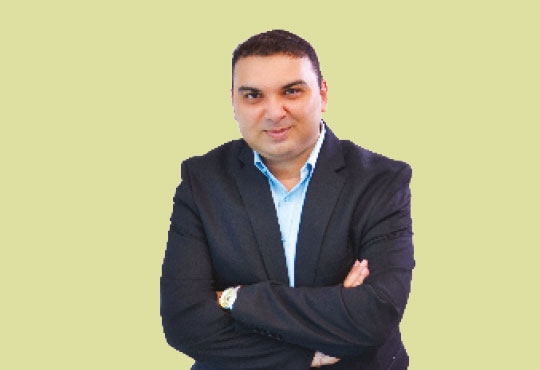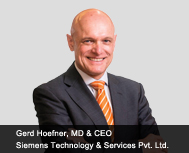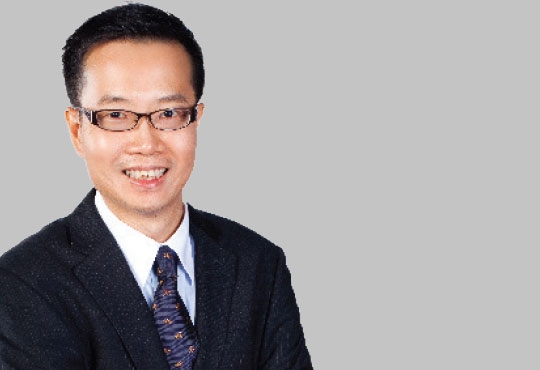
CIOTechOutlook >> Magazine >> October - 2013 issue
Research and Development: Driving the Innovative Machinery for an Organization
By
 Siemens Technology and Services Private Limited (STS) combines the four units: Corporate Technology India, Siemens Corporate Finance and Controlling, Global Shared Services and Siemens Management Consulting. It handles the entire software and IT implementations of Siemens AG (NYSE:SI), an electronics and electrical engineering conglomerate, headquartered in Munich. Siemens AG has a market cap of $103.54 Billion.
Siemens Technology and Services Private Limited (STS) combines the four units: Corporate Technology India, Siemens Corporate Finance and Controlling, Global Shared Services and Siemens Management Consulting. It handles the entire software and IT implementations of Siemens AG (NYSE:SI), an electronics and electrical engineering conglomerate, headquartered in Munich. Siemens AG has a market cap of $103.54 Billion. In bringing insights from a Managing Director and CEO at Siemens Technology India, one can take pride in working for an organization which is as old as 165 years. With a career of 28 years in the company, it is evident of the ever changing technological trends emerging throughout the market and the industry. Contemporarily, there is a huge traction among the four sectors in the industry; specifically energy, infrastructure, cities and lastly health care. The focus is not on the Indian market but on utilizing India's talents to provide services out of India to the rest of the business world.
This talent can be harnessed with a concentration towards innovation and technology driven growth markets as it has potential for future core business. There can be a strengthening the power of innovation by leveraging synergies worldwide, especially from India and increasingly utilizing external expertise. There is a great need for a research and development team to drive the innovative machinery of any organization. The team for instance should be focused on the importance of the USP of a product or service for driving it towards a certain goal and direction. This is one aspect of driving innovation from the country, if we talk about the research and technology team. A mutual symbiosis is to be developed with the research and development sector as when if there is a concept inception, steps are needed with the sector to take it into the product form and have it launched in the markets, this collaboration proves to be fruitful. There are teams which are working in the areas for example applied photonics and also teams working in software technology topics where big data is one of the topics which is to be covered. There are data bases looking out on how to have access to distributed databases and look at what innovative idea towards accessing large volumes of data. In addition, next generation of ideas for industrial automation and even a team for doing electronics or embedded systems design is imperative for the machinery of an organization to lunge forward.
Research teams are to be spread across different locations and work like a big network of competencies, with the belief of not making the lab as work but the world as the lab. With this in mind, looking into leveraging the open ecosystem to drive innovation by working very closely with world class institutes, research partners is a concurrent and exhaustive exercise. Working with this global network aids in helping to understand the industrial demands on one side, at the same time having networks into the academic community sets in motion of perceiving the latest technology coming up. This is an instance of how this organization can bring these technologies, innovations into our products offering and thus staying abreast of the latest technology.
Apart from keeping in touch with the latest trends and technologies, events like conferences for example, could bring colleagues from all locations of other countries and participate. This helps to keep in regular touch with the colleagues here in India to exchange their ideas and also to cover what kind of topics their technologies are coming up and this is one advantage of this global network for innovation.
In the past, looking at India, people used to say main pain point is retention where around five to six years back our attrition rate was in the range of 15 percent. It now has come down to three or four percent and could say 96 -97 percent if taken as the reverse measure retention attrition. So, the main challenge is getting the talent on board. The challenge is delivering on a regular basis, high quality and on time.
For a research organization, spotting those bright young entrepreneurs who have the passion for research and technology and giving them the right environment is the biggest challenge. It is also needed to encourage the entrepreneurial skills of the employees and encourage them to do the projects they are interested provided it is aligned with the product goals of their company. Having well built programs for identifying these people with talent this early is the need of the hour. Another approach would be to have very well established recruitment teams who will not go out and do campus recruitment.
As a company, we would like to emphasize that our focus is on industrial systems and the point, trying to bring out these technologies are really transforming the way industrial systems work. The challenge for the industrial system is that they are extremely complex. The is a need for a kind of predictive focus where solutions are crucial to the industry and Siemens focuses in vertical IT is to combine the knowledge which we have in the domain with the experience and provide the operator this further way successfully is where we are positioned successfully.
CXO Insights
Delivering Connected Experiences - Cognitive...
By Chirag Bhuva, Director - Customer Service & Operations, Vistaprint
Embracing the Internet of Things - What's in...
By Jimmy Cheong, Head of Professional Services & Technology Group (PSTG), Fuji Xerox Singapore
Game-based Learning Both Engages and Educates



